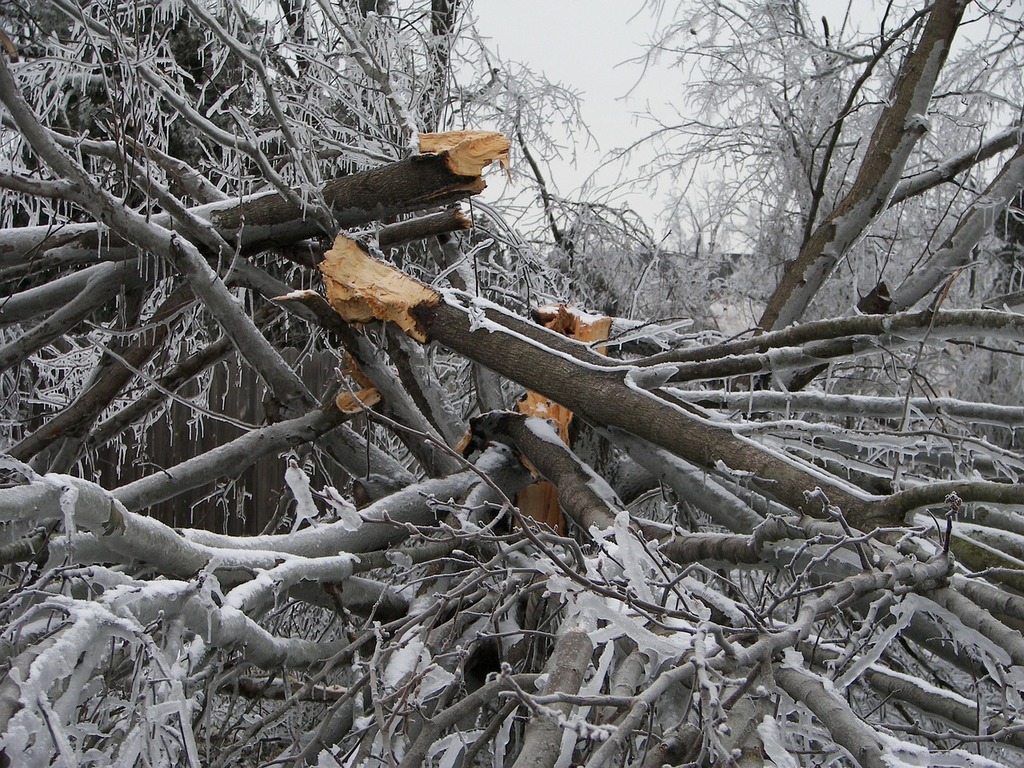4 Major Causes for Tree Removal in Columbus: Storm Damage, Disease, and Other Common RisksWhen considering tree removal in Columbus, you need to be aware of several key risks. Storm damage, for instance, can weaken trees due to high winds, heavy rain, and snow, leading to fallen branches or entire trees that pose threats to safety and property. Tree diseases like Dutch Elm Disease, Emerald Ash Borer, and Oak Wilt can also necessitate removal to prevent further damage and spread. Structural instability, marked by visible cracks, leaning trees, and hanging branches, indicates potential collapse and requires immediate action. Finally, landscaping and construction needs often mandate tree removal to comply with city codes and guarantee safety and aesthetics. Understanding these causes can help you take proactive steps to protect your property and community.  4 Major Causes for Tree Removal in Columbus: Storm Damage, Disease, and Other Common RisksWhen considering tree removal in Columbus, you need to be aware of several key factors that often make it necessary. Storms, for instance, can substantially weaken trees, making them hazardous and prone to falling, as seen in cases where high winds knock down trees and power lines across central Ohio. Additionally, tree diseases like Dutch elm disease and emerald ash borer infestations can compromise tree health, while structural instability, dead trees, and the needs of landscaping and construction projects also play critical roles in the decision to remove trees. Cause 1: Storm DamageIn Columbus, Ohio, storms frequently create dangerous tree conditions that necessitate removal. Extreme weather, including severe drought and unpredictable rainfall, stresses trees and can lead to broken limbs, fallen trees, and other structural damage, as seen in the recent drought affecting the state. When storms hit, the weight and impact of fallen trees or branches can be hazardous, often requiring immediate and professional removal to protect your property and guarantee safety. Emergency tree services are vital in such situations, as they provide timely and reliable assistance to clear storm damage and prevent further risk to your property. How Ohio’s Weather Creates Dangerous Tree ConditionsOhio’s unpredictable weather, particularly its storms, poses a significant threat to the health and stability of trees in Columbus. This can lead to storm damage that necessitates tree removal to protect your property and guarantee safety.
Cause 2: Tree DiseasesWhen considering tree removal in Columbus, Ohio, you need to be aware of the common tree diseases that can severely compromise tree health. Diseases like Dutch Elm Disease, which clogs the tree’s vascular system and can kill elm trees within weeks, and Emerald Ash Borer infestations, which cut off the nutrient supply to ash trees, are major concerns. These diseases, along with others such as Oak Wilt and Anthracnose, can weaken trees to the point where removal becomes necessary to protect your property and guarantee safety. Common Tree Diseases in Columbus and Their ImpactTree diseases are a significant threat to the health and longevity of trees in Columbus, often necessitating their removal to prevent further damage and guarantee safety. If you suspect your trees are infected, it’s vital to consult a certified arborist for tree inspections.
Cause 3: Structural Instability and Dead TreesWhen evaluating the need for tree removal in Columbus, it’s vital to identify signs of structural instability and dead trees. Look for visible cracks and splits in the trunk or branches, as these indicate potential structural damage that could lead to tree collapse. Check for leaning trees, which can signal underlying root issues or soil erosion, and inspect the roots for signs of decay, such as fungi or mushroom growth. Also, monitor for other indicators like large cavities, sap leakage, and shedding bark, as these can signify internal decay or pest infestations that compromise the tree’s stability. Signs of Structural Damage and Risks of Tree CollapseIdentifying signs of structural damage in trees is crucial for preventing potential collapses that could harm people, property, and infrastructure in Columbus. Regular inspections can uncover critical issues before they become catastrophic.
Cause 4: Landscaping and Construction NeedsWhen undertaking landscaping or construction projects in Columbus, you may need to remove trees to guarantee the success and safety of your plans. This is particularly true if trees are located in areas where new structures, driveways, or other features are to be built, or if their presence could interfere with the project’s integrity. The City of Columbus now requires tree mitigation for all construction and utility projects on city property, meaning you’ll need to replant or pay into a tree fund to compensate for the removed trees. When Tree Removal is Necessary for Property ProjectsTree removal in Columbus often becomes a necessity when property projects require clearing land or guaranteeing the safety and aesthetics of the landscape. Here are some key reasons why tree removal is necessary for these projects:
|
|
